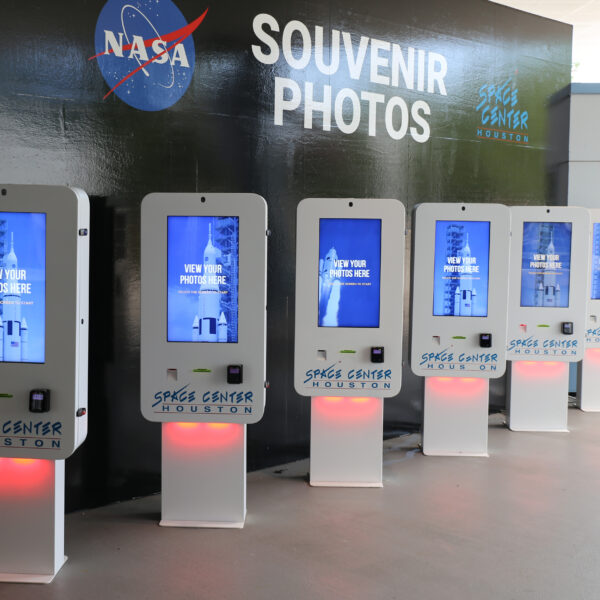
Kiosks
Close
Kiosk Industries


What should you do if you need a kiosk quickly? Three important things to keep in mind when looking to execute a kiosk program promptly are: consider the use of standard kiosks, be cognizant of what hardware and features are necessary for the kiosk to function as desired, and come to the project with preexisting software. Read more about each point below.
A standard kiosk enclosure has been pre-engineered and pre-designed. These enclosures are built to order, however, because the engineering and design work is already done, the lead time is much shorter and costs are more affordable than it would be for a completely custom kiosk.
This isn’t to say that standard kiosks cannot be customized, though.
“All our standard enclosures have a level of customization available,” explains Frank Mayer kiosk expert Brennan Hogan. “This means we have flexibility when it comes to hardware such as touchscreens, PC’s, and peripherals that can be used in our standard enclosures.”
Dave Loyda, Strategic Business Development Manager at Frank Mayer, points out that there are also more eye-catching ways of customizing a standard enclosure as well, adding, “Standard kiosks can also be customized for specific branding through graphic treatments involving vinyl decals or magnetic graphics.”
While completely custom kiosks require a from-scratch approach, simply including custom graphics or adding peripherals can tweak a standard design to make it the perfect fit and still allow for a faster production timeline.
An important question for any client to ask themselves when considering ordering a kiosk is, “What does the kiosk need to be able to do?” The answer to this question is going to determine the features and hardware the kiosk is going to require.
“We always suggest doing a proof of concept first,” says Hogan. “When we talk about a proof of concept, we truly want to put out a minimum viable solution in the wild to collect the data and make an informed decision moving forward. Knowing what hardware and features are necessary for an MVP can really help reduce cost and speed up time to market.”
Determining what peripherals are necessary is an important step. Peripherals are common parts that can be added to customize a standard kiosk. Because they’re frequently used, many standard kiosks have already been engineered to pair with these components. Some popular examples of peripherals include credit card readers, bar code scanners, and printers.
Consider quality when looking into hardware and features. Frank Mayer Technology Manager David Jaeger weighs in. “It’s important to choose quality components that are commercial/industrial grade,” he says. “Many of our partners have products with long lifespans (5-7 years), which is extremely important for re-runs or service and maintenance.”
This can, in turn, affect the overall timeline. Loyda notes, “When hardware requirements fall outside the scope of a standard solution, then there may be engineering time involved to create a solution to accommodate for the specific hardware components.”
A quick turnaround time when ordering a kiosk can be vital, but that doesn’t mean quality has to be sacrificed in order to make that happen.
It’s important to note that kiosks themselves are not pre-programmed devices. They require specialized software in order to function.
Running software on a kiosk can be as simple as having a lockdown web browser that displays a company’s website or require more detailed development. Either way, software of some kind is necessary, and while kiosk manufacturers can help with software development, this will add to the overall cost and timeline.
“Software is usually what holds up the process. It can greatly differ depending on what the kiosk is supposed to do,” explains Jaeger. “A simple online browser-based app in combination with lockdown software can get you to market quickly, whereas building custom software from the ground up will take months of development.”
If you need help determining the right software partner, reach out to your kiosk supplier for expert recommendations. But if you’re looking to get a kiosk quickly, keep in mind that it’s always advantageous to enter the design process with a plan for software. This is going to allow the manufacturer to get a jumpstart on production.
When looking to get a kiosk quickly, considering standard enclosures and peripherals as well as coming to the project with preexisting software is going to expedite the manufacturing process and get the final product in-store faster.
---
Need a kiosk with a quick turnaround? We’ve got you covered. We offer market-ready kiosk solutions available within 8 to 10 weeks. Learn more about these options.